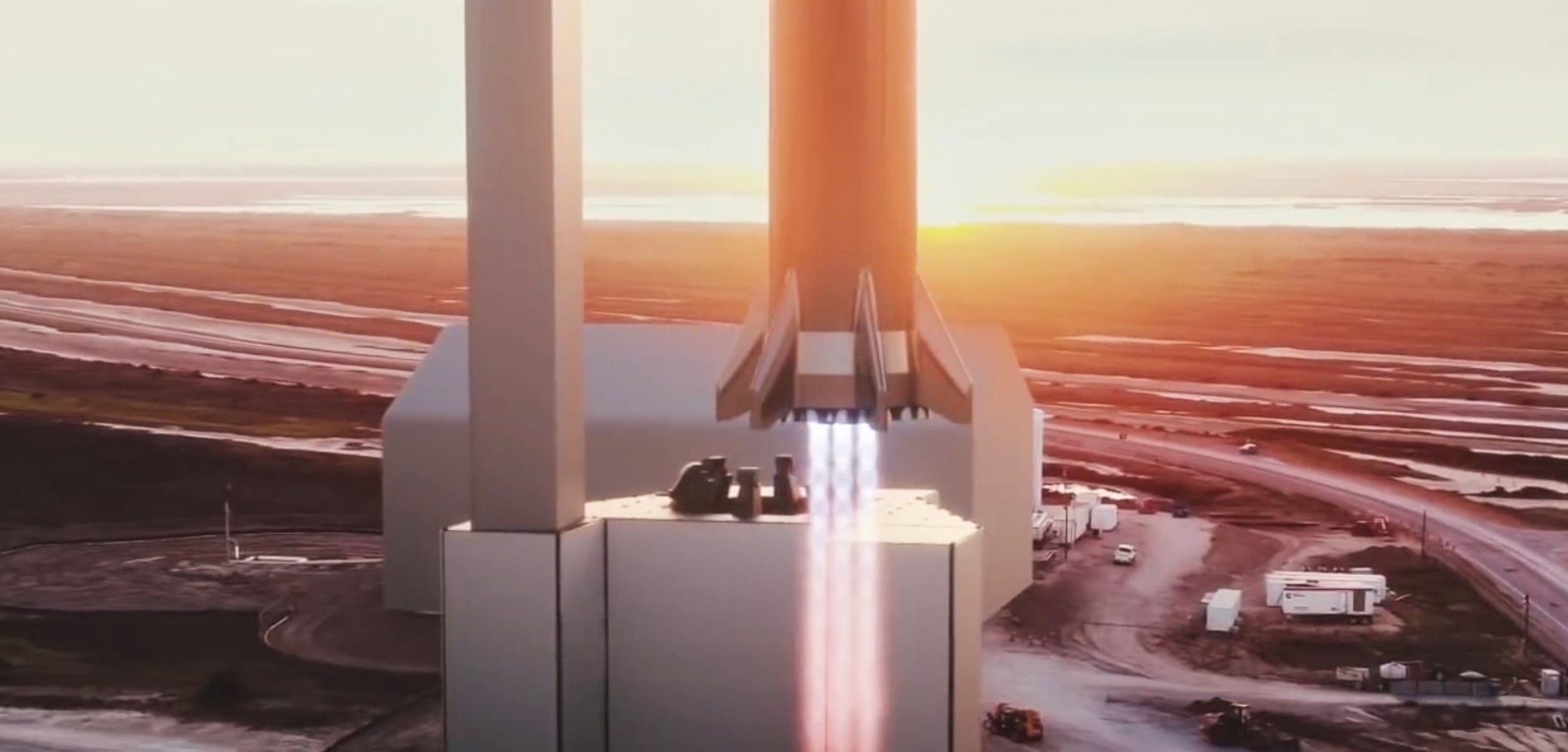

News
SpaceX begins Starship launch mount installation at historic Pad 39A in Florida
At the same time as SpaceX’s Boca Chica, Texas team is working around the clock to prepare Starship Mk1 for several major tests, the company is building a second dedicated Starship launch complex at Pad 39A and as of November 4th, that construction effort has reached a symbolic milestone.
According to photos taken by local resident and famed rocket and ship photographer Julia Bergeron on a bus tour of Kennedy Space Center (KSC), SpaceX has officially begun to install a large steel structure at Launch Complex 39A, a pad the company has leased from NASA since 2014. Known as a launch mount, the massive structure will one day support SpaceX’s first East Coast Starship and Super Heavy static fires and test flights.
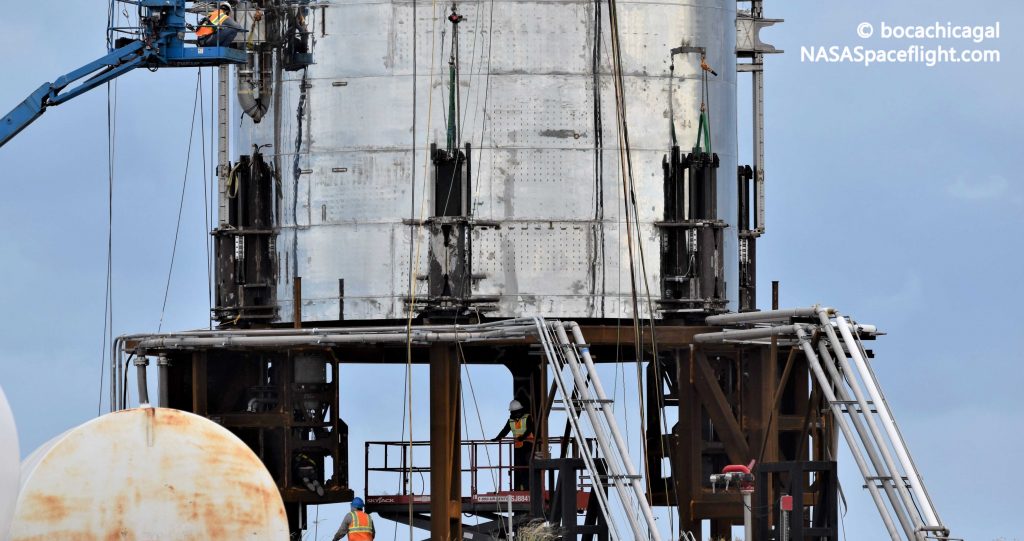
At SpaceX’s Boca Chica, Texas Starship facilities, the company has already made a huge amount of progress fabricating and outfitting a brand new launch mount that will soon support Starship Mk1’s first propellant loading, static fire, and flight tests. The spartan steel structure looks different from anything SpaceX has built in the past for Falcon 9 and is equally unrecognizable alongside the renders of a finished-product launch pad included in an updated Starship launch video.
What is undeniable, nevertheless, is the speed with which technicians have taken the Texas launch mount from a group of unconnected, partially-finished parts to a nearly complete structure with the business half of Starship Mk1 installed on top. SpaceX workers have built the mount, completed a large amount of plumbing to connect it to nearby liquid oxygen, methane, nitrogen, and helium reserves, and installed Starship on the mount in less than two months. The final integration of different prefabricated pieces began barely a month before Starship was moved to the pad, as pictured below.
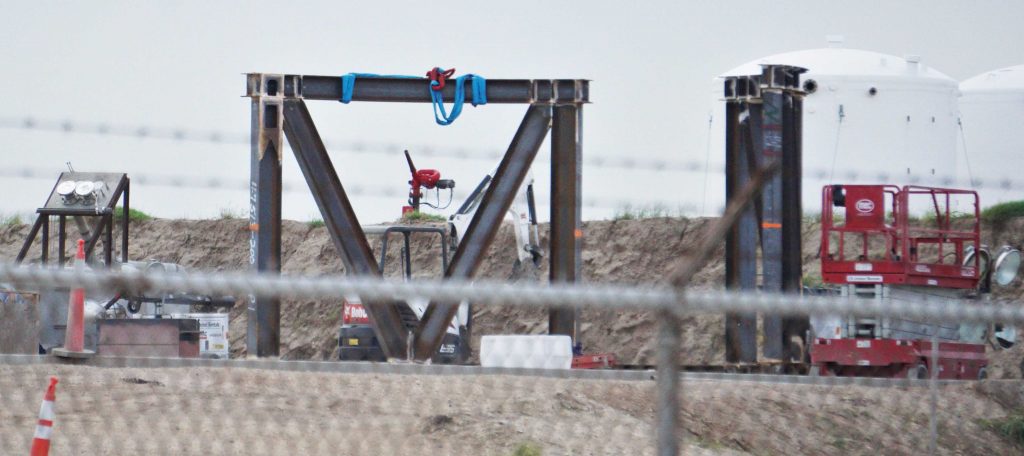
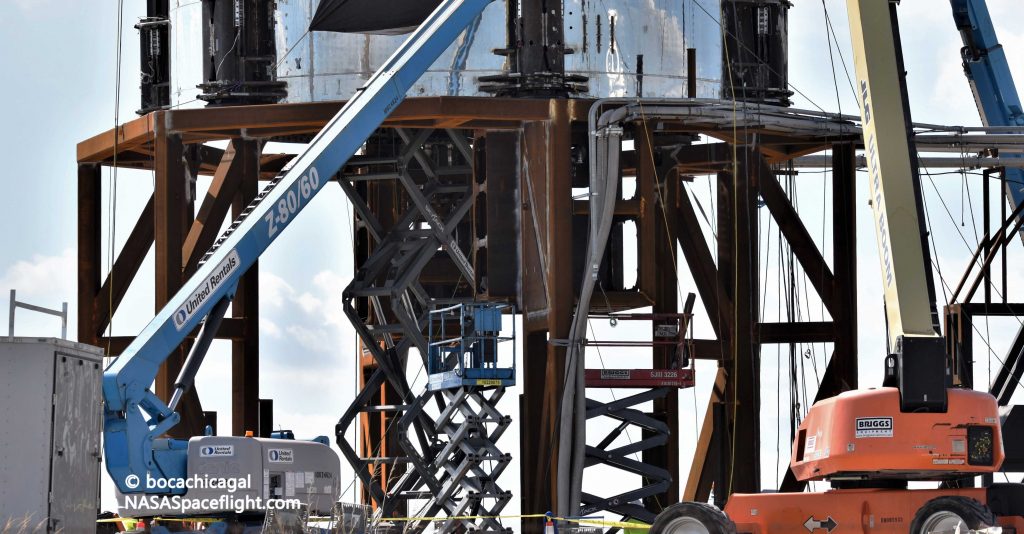
Two pads, two approaches
Although Boca Chica’s launch mount is quite large, based on Julia’s photos of Pad 39A, Florida’s nascent launch mount is going to be significantly bigger. The section that SpaceX began installing in the first days of November appears already be much taller than the mount in Texas, and it also looks more like a rectangular corner than anything resembling part of Boca Chica’s hexagonal structure.
At the same time, the apparent rectangular corner being worked on in Florida would be a much better fit for the partially-enclosed launch mount structure shown in SpaceX’s official 2019 Starship launch video.
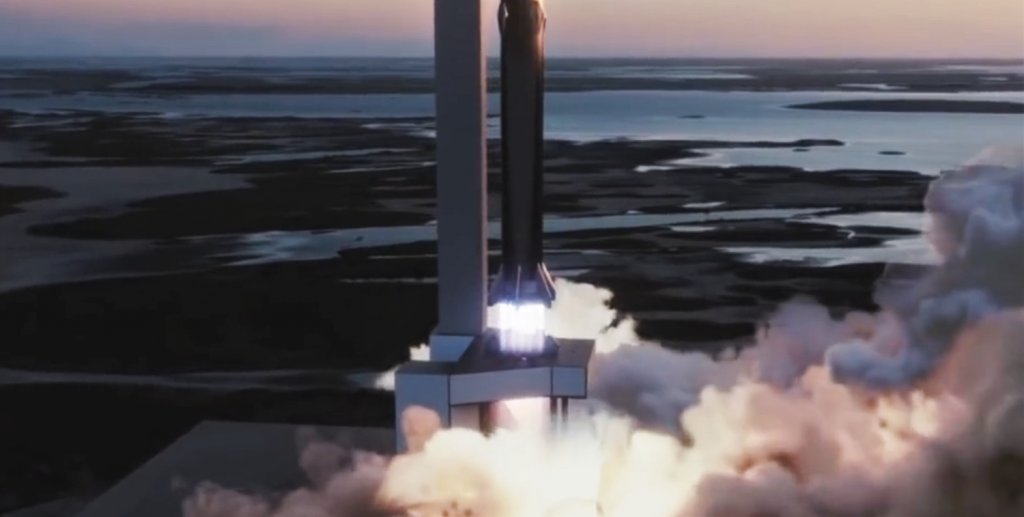
This is all to say that it looks like SpaceX is taking significantly different approaches with its two prospective Starship launch sites, which should come as no surprise in the context of the Starship program. SpaceX is already competitively building multiple Starship prototypes at two separate facilities in Boca Chica, Texas and Cocoa, Florida, a competition that has already produced visible differences between Mk1 and Mk2 prototypes. There’s a good chance that SpaceX intends to preserve that competitive atmosphere with Starship’s launch facilities, not just the rocket itself.
Additionally, it’s clear that Texas and Florida currently serve very different roles in the actual testing of Starship prototypes. Boca Chica has been active in that regard for more than half a year, ranging from the first Starhopper static fire in April to Starhopper’s 150-meter test flight in August. Florida has been almost entirely focused on iterating the build process itself and has already prefabricated nearly two dozen single-weld steel rings that will soon become Starship Mk4.
A step further, SpaceX CEO Elon Musk has made it clear that he is pushing for Starship’s first orbital launch to occur in the first half of 2020, an incredibly ambitious target given that the first Super Heavy booster prototype has yet to begin fabrication or assembly of any kind. Regardless, with that ambitious target in mind, SpaceX still needs to try to build a launch facility capable of standing up to a vehicle more powerful than Saturn V unfathomably quickly.
Head in the clouds
More likely than not, SpaceX’s Pad 39A Starship facilities will (attempt to) be that launch facility. An August 2019 environmental impact statement revealed that SpaceX would avoid Pad 39A’s massive flame trench and instead build a separate water-cooled thrust diverter, a technology SpaceX is extremely familiar with.
The diverter will likely have to be larger than anything SpaceX has ever attempted to build and will take a significant amount of time and money to fabricate, but the approach could potentially allow SpaceX to build Super Heavy-rated launch facilities from scratch in just 6-12 months. Put simply, however, SpaceX is not going to want to build a Starship-sized thrust diverter and launch mount in Florida if it will almost immediately have to build a second, larger replacement big enough for orbital launch attempts with Super Heavy.
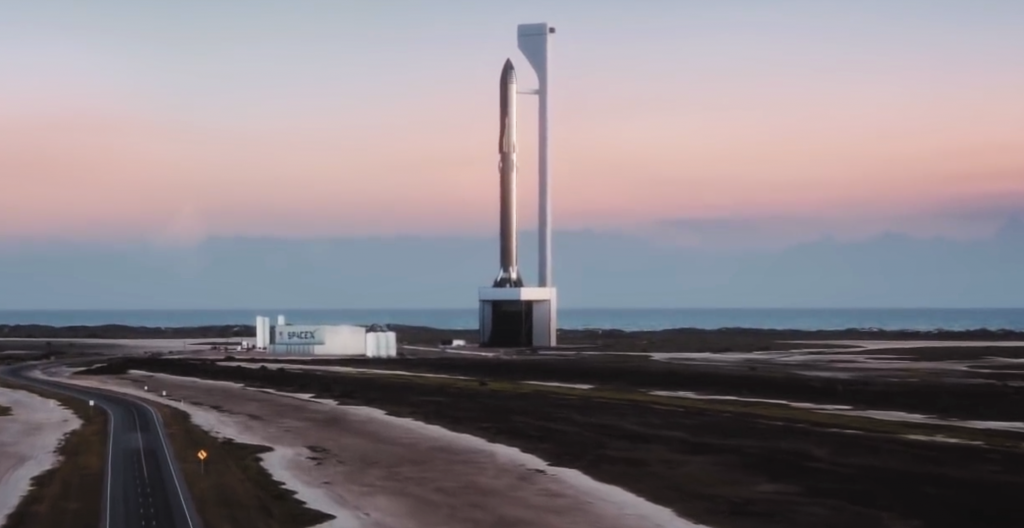
All things considered, it’s thus reasonably likely that SpaceX’s first draft of Florida Starship launch facilities will immediately jump to something sized for Super Heavy static fires and launches, even if that means it will take much longer to complete. If the pace of launch pad development in Boca Chica is anything to go by, it’s entirely possible that SpaceX will go from breaking ground at Pad 39A (mid-September 2019) to a more or less complete Starship-Super Heavy launch mount in roughly half a year.
Even if it takes more than a year to build, SpaceX could still be ready to attempt Starship’s first orbital launch well before the end of 2020.
Check out Teslarati’s Marketplace! We offer Tesla accessories, including for the Tesla Cybertruck and Tesla Model 3.
News
Tesla begins Robotaxi certification push in Arizona: report
Tesla seems serious about expanding its Robotaxi service to several states in the coming months.

Tesla has initiated discussions with Arizona transportation regulators to certify its driverless Robotaxi service in the state, as per a recent report from Bloomberg News. The move follows Tesla’s launch of its Robotaxi pilot program in Austin, Texas, as well as CEO Elon Musk’s recent comments about the service’s expansion in the Bay Area.
The Arizona Department of Transportation confirmed to Bloomberg that Tesla has reached out to begin the certification process for autonomous ride-sharing operations in the state. While details remain limited, the outreach suggests that Tesla is serious about expanding its driverless Robotaxi service to several territories in the coming months.
The Arizona development comes as Tesla prepares to expand its service area in Austin this weekend, as per CEO Elon Musk in a post on X. Musk also stated that Tesla is targeting the San Francisco Bay Area as its next major market, with a potential launch “in a month or two,” pending regulatory approvals.
Tesla first launched its autonomous ride-hailing program on June 22 in Austin with a small fleet of Model Y vehicles, accompanied by a Tesla employee in the passenger seat to monitor safety. While still classified as a test, Musk has said the program will expand to about 1,000 vehicles in the coming months. Tesla will later upgrade its Robotaxi fleet with the Cyercab, a two-seater that is designed without a steering wheel.
Sightings of Cybercab castings around the Giga Texas complex suggests that Tesla may be ramping the initial trial production of the self-driving two-seater. Tesla, for its part, has noted in the past that volume production of the Cybercab is expected to start sometime next year.
In California, Tesla has already applied for a transportation charter-party carrier permit from the state’s Public Utilities Commission. The company is reportedly taking a phased approach to operating in California, with the Robotaxi service starting with pre-arranged rides for employees in vehicles with safety drivers.
News
Tesla sets November 6 date for 2025 Annual Shareholder Meeting
The automaker announced the date on Thursday in a Form 8-K.

Tesla has scheduled its 2025 annual shareholder meeting for November 6, addressing investor concerns that the company was nearing a legal deadline to hold the event.
The automaker announced the date on Thursday in a Form 8-K submitted to the United States Securities and Exchange Commission (SEC). The company also listed a new proposal submission deadline of July 31 for items to be included in the proxy statement.
Tesla’s announcement followed calls from a group of 27 shareholders, including the leaders of large public pension funds, which urged Tesla’s board to formally set the meeting date, as noted in a report from The Wall Street Journal.
The group noted that under Texas law, where Tesla is now incorporated, companies must hold annual meetings within 13 months of the last one if requested by shareholders. Tesla’s previous annual shareholder meeting was held on June 13, 2024, which placed the July 13 deadline in focus.
Tesla originally stated in its 2024 annual report that it would file its proxy statement by the end of April. However, an amended filing on April 30 indicated that the Board of Directors had not yet finalized a meeting date, at least at the time.
The April filing also confirmed that Tesla’s board had formed a special committee to evaluate certain matters related to CEO Elon Musk’s compensation plan. Musk’s CEO performance award remains at the center of a lengthy legal dispute in Delaware, Tesla’s former state of incorporation.
Due to the aftermath of Musk’s legal dispute about his compensation plan in Delaware, he has not been paid for his work at Tesla for several years. Musk, for his part, has noted that he is more concerned about his voting stake in Tesla than his actual salary.
At last year’s annual meeting, TSLA shareholders voted to reapprove Elon Musk’s compensation plan and ratified Tesla’s decision to relocate its legal domicile from Delaware to Texas.
Elon Musk
Grok coming to Tesla vehicles next week “at the latest:” Elon Musk
Grok’s rollout to Tesla vehicles is expected to begin next week at the latest.

Elon Musk announced on Thursday that Grok, the large language model developed by his startup xAI, will soon be available in Tesla vehicles. Grok’s rollout to Tesla vehicles is expected to begin next week at the latest, further deepening the ties between the two Elon Musk-led companies.
Tesla–xAI synergy
Musk confirmed the news on X shortly after livestreaming the release of Grok 4, xAI’s latest large language model. “Grok is coming to Tesla vehicles very soon. Next week at the latest,” Musk wrote in a post on social media platform X.
During the livestream, Musk and several members of the xAI team highlighted several upgrades to Grok 4’s voice capabilities and performance metrics, positioning the LLM as competitive with top-tier models from OpenAI and Google.
The in-vehicle integration of Grok marks a new chapter in Tesla’s AI development. While Tesla has long relied on in-house systems for autonomous driving and energy optimization, Grok’s integration would introduce conversational AI directly into its vehicles’ user experience. This integration could potentially improve customer interaction inside Tesla vehicles.
xAI and Tesla’s collaborative footprint
Grok’s upcoming rollout to Tesla vehicles adds to a growing business relationship between Tesla and xAI. Earlier this year, Tesla disclosed that it generated $198.3 million in revenue from commercial, consulting, and support agreements with xAI, as noted in a report from Bloomberg News. A large portion of that amount, however, came from the sale of Megapack energy storage systems to the artificial intelligence startup.
In July 2023, Musk polled X users about whether Tesla should invest $5 billion in xAI. While no formal investment has been made so far, 68% of poll participants voted yes, and Musk has since stated that the idea would be discussed with Tesla’s board.
-

 Elon Musk1 week ago
Elon Musk1 week agoTesla investors will be shocked by Jim Cramer’s latest assessment
-

 Elon Musk3 days ago
Elon Musk3 days agoElon Musk confirms Grok 4 launch on July 9 with livestream event
-

 Elon Musk15 hours ago
Elon Musk15 hours agoxAI launches Grok 4 with new $300/month SuperGrok Heavy subscription
-

 News7 days ago
News7 days agoTesla Model 3 ranks as the safest new car in Europe for 2025, per Euro NCAP tests
-

 Elon Musk2 weeks ago
Elon Musk2 weeks agoA Tesla just delivered itself to a customer autonomously, Elon Musk confirms
-

 Elon Musk1 week ago
Elon Musk1 week agoxAI’s Memphis data center receives air permit despite community criticism
-

 Elon Musk2 weeks ago
Elon Musk2 weeks agoTesla’s Omead Afshar, known as Elon Musk’s right-hand man, leaves company: reports
-

 News2 weeks ago
News2 weeks agoXiaomi CEO congratulates Tesla on first FSD delivery: “We have to continue learning!”



















